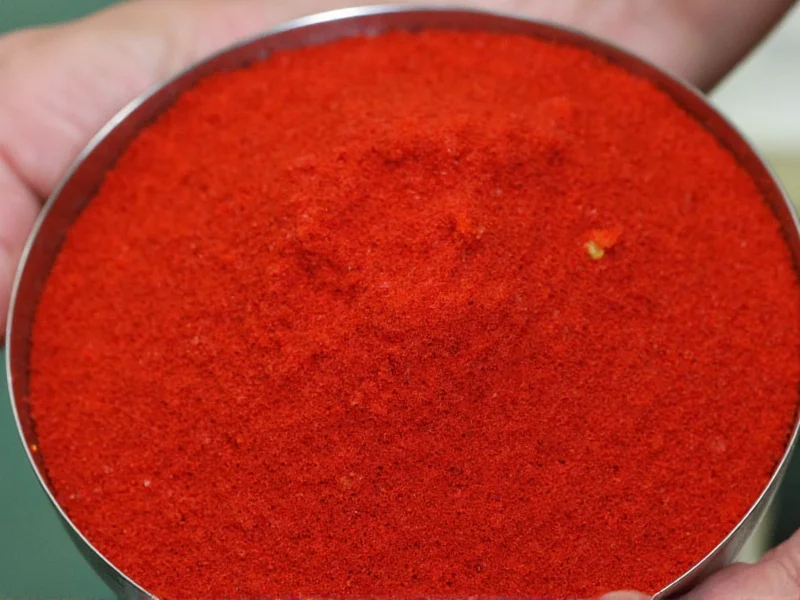Understanding Chamoy: Mexico's Flavor Powerhouse
Chamoy represents one of Mexico's most distinctive culinary innovations—a complex sauce that balances sweet, sour, salty, and spicy elements in perfect harmony. Originating from Asian preserved fruits brought to Mexico via the Manila Galleon trade route, modern chamoy evolved into a uniquely Mexican creation using pickled fruits, chilies, and spices. This transformation created a versatile condiment that has become integral to Mexican street food culture.
The Flavor Profile That Defines Chamoy
What makes chamoy so special is its multi-dimensional flavor profile. Unlike single-note sauces, chamoy delivers an immediate burst of sourness from pickled fruits or tamarind, followed by subtle sweetness, underlying saltiness, and varying levels of chili heat. This complexity allows chamoy to enhance rather than overpower foods. Traditional chamoy uses apricots, plums, or mangos as its fruit base, though modern variations incorporate diverse fruits to create different flavor nuances.
| Chamoy Type | Primary Ingredients | Best Uses |
|---|---|---|
| Classic Chamoy | Apricots, chilies, lime | Fruit dipping, micheladas |
| Mango Chamoy | Mango, tamarind, chilies | Mangonadas, candies |
| Spicy Chamoy | Multiple chilies, fruit base | Snack coatings, intense dipping |
| Sweet Chamoy | Higher sugar content | Desserts, frozen treats |
Chamoy's Culinary Applications Explained
Understanding what is chamoy used for requires examining its diverse applications across Mexican cuisine. The sauce's versatility makes it suitable for both traditional and innovative culinary creations.
Fruit Enhancement
Perhaps the most iconic use of chamoy involves fresh fruits. Street vendors across Mexico prepare frutas con chamoy by coating sliced mango, pineapple, watermelon, or jicama with chamoy, then adding chili powder and lime. This combination creates a flavor experience that perfectly balances all taste elements. The sauce's acidity complements sweet fruits while the chilies add complexity that transforms simple snacks into memorable treats.
Beverage Integration
Chamoy plays a crucial role in several popular Mexican beverages. The michelada, a beer-based cocktail, often includes chamoy along with lime juice and various sauces. More prominently, the mangonada or chamoyada features chamoy blended with mango sorbet, creating a frozen drink with distinctive red swirls. These beverages showcase how chamoy used for drink recipes adds depth that simple syrups cannot match.
Snack and Street Food Applications
Street food vendors use chamoy as both a dipping sauce and coating for various snacks. Tamarind candies often come coated in chamoy, while some potato chip varieties feature chamoy seasoning. Elotes (Mexican street corn) sometimes incorporates chamoy along with mayonnaise and chili powder. This demonstrates how traditional uses of chamoy extend beyond fruit to enhance savory snacks with its distinctive flavor profile.
Home Kitchen Versatility
Home cooks increasingly explore how to use chamoy in recipes beyond traditional applications. Creative uses include:
- Marinating proteins for tacos or grilled dishes
- Creating salad dressings with added depth
- Enhancing fruit salsas for fish or chicken dishes
- Mixing into mayonnaise for sandwich spreads
- Adding complexity to barbecue sauces
These applications show why understanding what foods pair well with chamoy matters for modern cooking.
Cultural Significance of Chamoy
Chamoy represents more than just a sauce—it embodies Mexico's culinary adaptability. The sauce's evolution from Asian preserved fruits to a distinctly Mexican creation illustrates how cultures transform imported ingredients into something uniquely their own. In contemporary Mexican street food culture, chamoy has become a symbol of flavor innovation, often featured alongside other iconic condiments like tamarind candy and chili-lime seasonings.
Selecting and Storing Chamoy
When exploring how chamoy is used in authentic Mexican cooking, proper selection and storage matter. Commercial chamoy comes in various consistencies—from thin sauces to thick pastes. For fruit dipping, a medium-thick consistency works best, while thinner varieties suit beverage applications. Store opened chamoy in the refrigerator, where it typically maintains quality for 6-12 months. High-quality chamoy should display vibrant color and balanced flavor without artificial aftertastes.
Creating Your Own Chamoy Experience
Experimenting with chamoy at home requires understanding its fundamental uses. Start with traditional applications before exploring innovative recipes. For authentic results, pair chamoy with:
- Fresh, ripe tropical fruits
- Lime juice to enhance brightness
- Chili powder for added heat
- Salt to balance sweetness
Remember that authentic chamoy applications focus on enhancing rather than overwhelming the primary ingredients. The sauce should complement, not dominate, the eating experience.











 浙公网安备
33010002000092号
浙公网安备
33010002000092号 浙B2-20120091-4
浙B2-20120091-4